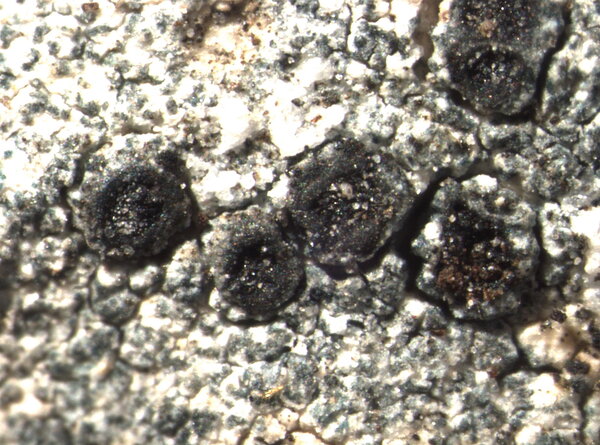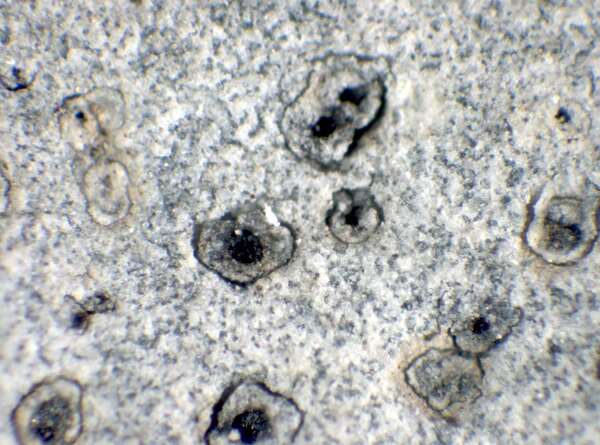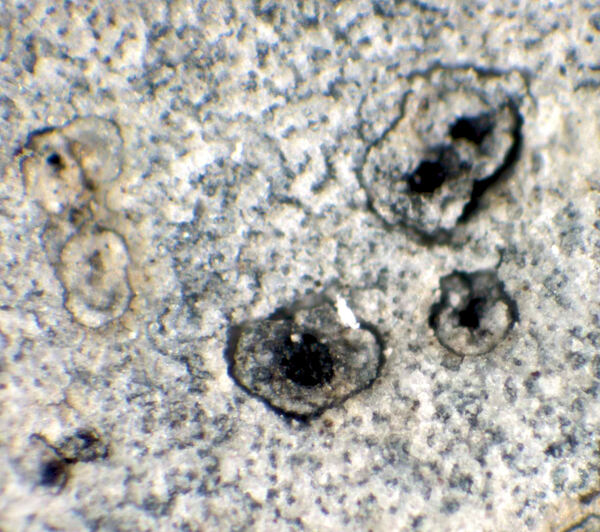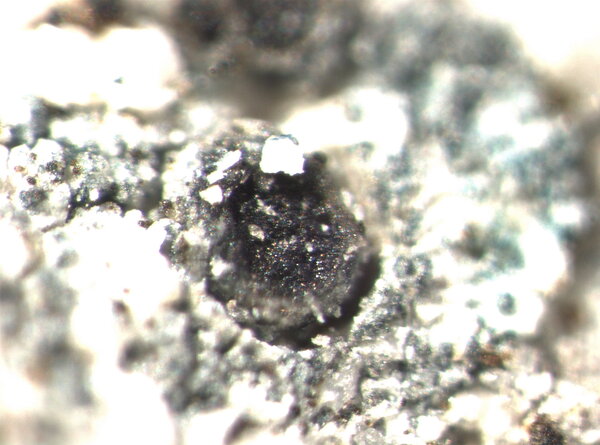Eiglera homalomorpha (Nyl.) Hafellner & Türk
Clauzade & Cl. Roux ex Hafellner & Türk, Stapfia, 76: 151, 2001. Basionym: Lecanora homalomorpha Nyl. - Flora, 66: 101, 1883.
Synonyms: Aspicilia homalomorpha (Nyl.) Hue; Hymenelia homalomorpha (Nyl.) Poelt & Vězda; Lecidea cavatula Nyl.
Distribution: N - Frl (Cucchi & al. 2009, Tretiach 2015f), TAA (Nascimbene & al. 2021).
Description: Thallus crustose, endosubstratic or hemiendosubstratic, smooth, whitish, pale grey or bluish green, without a distinct prothallus. Apothecia completely immersed in the rock, lecideine, blue-black to black, often irregular in outline, 0.4-0.8(-1) mm across, with a concave to flat disc and a thin, raised, finally excluded proper margin. Proper exciple poorly developed, very thin, mostly colourless, somehow thicker and blue-green in upper part; epithecium blue-green, N+ purple, K-; hymenium colourless or pale blue-green in upper part; paraphyses thread-like, sparingly branched, submoniliform in upper part, not thickened at apex; hypothecium colourless. Asci 8-spored, broadly clavate, with a uniformly K/I+ blue tholus without an ocular chamber, surrounded by a thick, gelatinous, K/I+ blue sheath. Ascospores 1-celled, hyaline, ellipsoid, (9-)11-15(-20) x (7-)9-12 µm. Pycnidia mostly arising at the periphery of the thallus, with a blue-green, N+ purple wall. Conidia short-bacilliform, straight to slightly curved, 4.5-5(-7) x 0.7-1 µm. Photobiont chlorococcoid, the cells 7-12 µm wide. Spot tests: thallus K-, C-, KC-, P-, UV-. Chemistry: thallus without lichen substances.Note: on limestone near the ground, such as on basal parts of steep cliffs in upland areas; certainly more widespread in the Alps, where it is locally common. According to Tretiach (2015f), the records from Veneto reported by Nimis (1994), and Nascimbene & Caniglia (2000, 2003c) refer to another species.
Growth form: Crustose endolithic
Substrata: rocks
Photobiont: green algae other than Trentepohlia
Reproductive strategy: mainly sexual
Commonnes-rarity: (info)
Alpine belt: rather rare
Subalpine belt: rare
Oromediterranean belt: absent
Montane belt: extremely rare
Submediterranean belt: absent
Padanian area: absent
Humid submediterranean belt: absent
Humid mediterranean belt: absent
Dry mediterranean belt: absent

Predictive model
Herbarium samples
Growth form: Crustose endolithic
Substrata: rocks
Photobiont: green algae other than Trentepohlia
Reproductive strategy: mainly sexual
Commonnes-rarity: (info)
Alpine belt: rather rare
Subalpine belt: rare
Oromediterranean belt: absent
Montane belt: extremely rare
Submediterranean belt: absent
Padanian area: absent
Humid submediterranean belt: absent
Humid mediterranean belt: absent
Dry mediterranean belt: absent

Predictive model
| Herbarium samples |
 INDEX FUNGORUM
INDEX FUNGORUM
 GBIF
GBIF
 DOLICHENS
DOLICHENS






